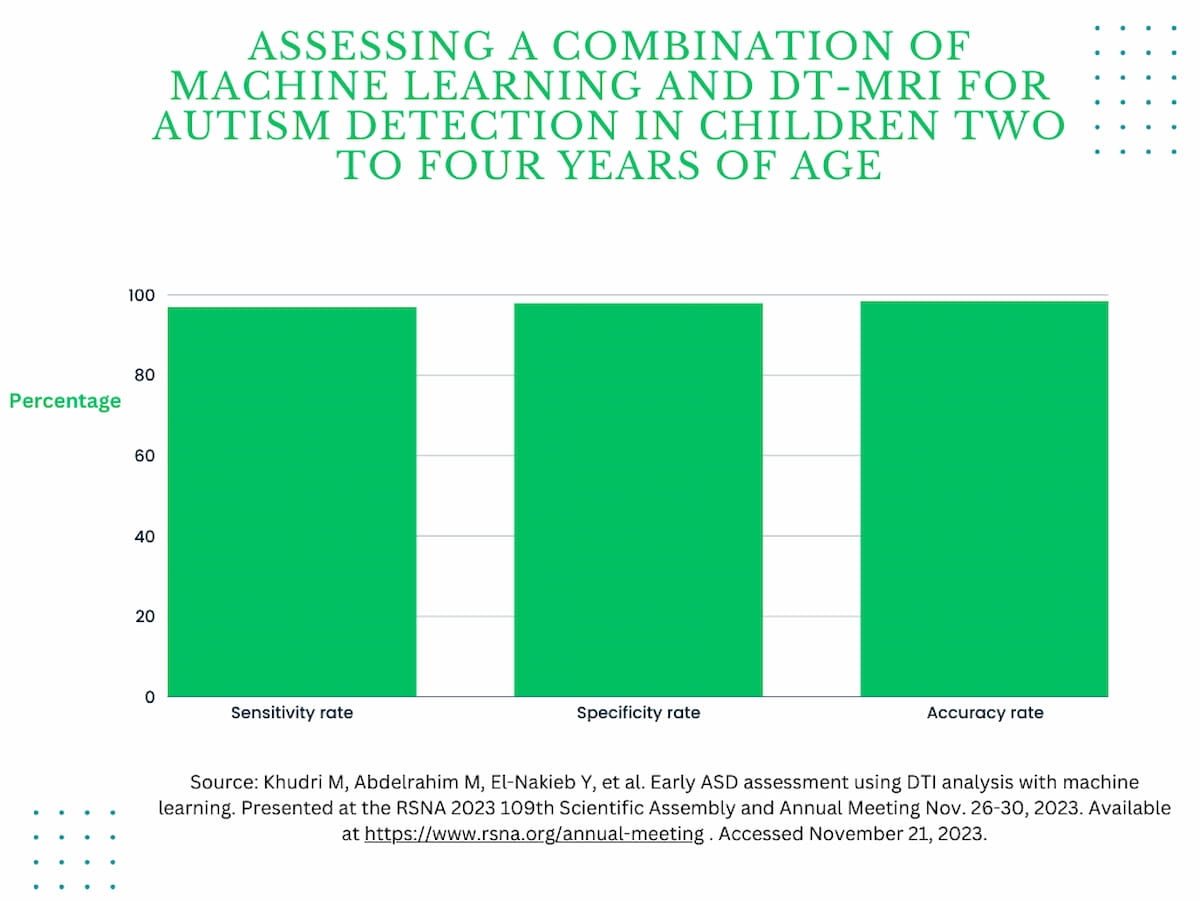Emerging research suggests that leveraging a combination of artificial intelligence (AI) and diffusion tensor magnetic resonance imaging (DT-MRI) can be beneficial in identifying autism in children aged between two and four. Recent data from the Centers for Disease Control and Prevention (CDC) indicates that 30% of children with autism are not diagnosed by the age of eight.
Researchers have delved into a new approach, focusing on utilizing a machine learning system to assess connectivity indicators extracted from DT-MRI brain scans to visualize water flow in white matter tracts. This innovative investigation is set to be presented at the upcoming annual Radiological Society of North America (RSNA) conference in Chicago. The study involved 100 typically developing children and 126 children diagnosed with autism, all falling within the two to four age range.
The results revealed an impressive 98.5% accuracy in detecting autism spectrum disorder (ASD) using the machine learning system, with a sensitivity rate of 97%.
Moreover, a machine learning system that analyzed diffusion tensor MRI images exhibited a 98.5% accuracy in diagnosing ASD, along with a 97% sensitivity rate and 98% specificity rate.
The researchers suggested that this approach could significantly improve the medical evaluation of ASD patients, offering detailed insights into compromised neural pathways, potential impacts on brain function, and severity assessment for autism.
Renowned co-author of the study, Dr. Gregory N. Barnes, highlighted the potential of imaging in promptly identifying dementia. He envisions an ASD diagnostic process starting with DT-MRI, followed by a brief consultation to confirm the findings and guide parents on the next steps, potentially reducing psychologists’ workload by up to 30%.
Dr. Barnes emphasized the unique benefits of DT-MRI in evaluating individuals with ASD, capturing the abnormal connections within the brain that contribute to characteristic symptoms such as social impairments and repetitive behaviors.
Key Observations
- Early Detection with DT-MRI and AI: The study emphasizes the effectiveness of combining AI and DT-MRI for early ASD detection in young children, offering a promising alternative to traditional diagnostic timelines.
- Enhanced Medical Precision: The machine learning system showed exceptional diagnostic accuracy for ASD, effectively distinguishing between autistic children and typically developing peers, with high levels of sensitivity, precision, and accuracy.
- Impact on Clinical Workflow: The integration of AI and DT-MRI could streamline the ASD diagnostic process by providing a comprehensive analysis of neural pathways, brain function impacts, and autism severity, potentially reducing the psychological workload by 30%.
The machine learning system has the potential to facilitate early interventions, significantly improving the quality of life for ASD patients, as highlighted by co-author Mohammed Khudri. Khudri emphasized the enlightening nature of their approach, enabling early autism diagnosis and advocating for medical interventions before age three to achieve better outcomes, including enhanced independence and higher IQ levels.
The study authors are reportedly seeking FDA 510(k) clearance for the machine learning system to advance its clinical application.
References
- Network for Monitoring Autism and Developmental Disabilities (ADDD). A Preview of Autism Spectrum Disorder Among 4 and 8-year-old Children in Multiple Communities Across the United States in 2023, according to a group statement on dementia. CDC (Centers for Disease Control and Prevention). Available at: CDC Autism Report accessed on November 21st, 2023.
- El-Nakieb Y, Khudri M, Abdelrahim M., et al. First examination of ASD using machine learning and DTI analysis. Presented on November 26–30, 2023, at the RSNA 109th Scientific Assembly and Annual Meeting. Available at the RSNA Annual Meeting. Accessed on November 21st, 2023.






